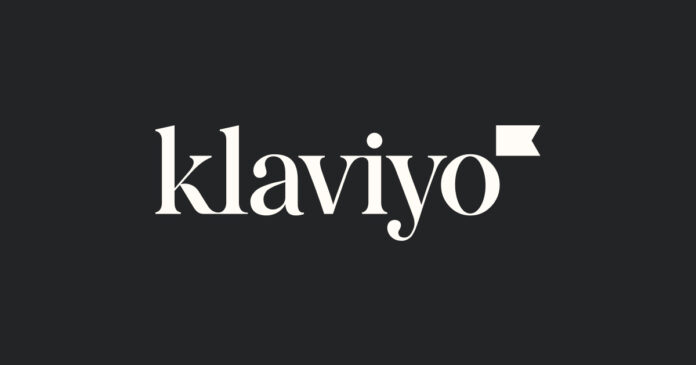Klaviyo is a powerful email marketing and automation platform designed to help businesses personalise customer communication across email, SMS, and web push notifications. With advanced features like segmentation, A/B testing, and deep analytics, Klaviyo empowers e-commerce brands to optimise campaigns and boost audience engagement. Its seamless integrations with platforms like Shopify, Magento, and BigCommerce make it a favourite among online retailers looking to leverage customer data for hyper-targeted marketing.
While businesses can technically operate without Klaviyo or similar platforms, doing so means missing out on crucial automation capabilities that drive revenue. Klaviyo’s strength lies in its ability to transform raw customer data into personalised, behaviour-triggered campaigns that consistently outperform manual email efforts. The platform’s automation workflows and real-time analytics help businesses increase conversion rates while saving countless hours on manual campaign management.
For those considering alternatives, the market offers several competent options including MailChimp, Constant Contact, and GetResponse for email marketing. The optimal choice depends on your business size, technical requirements, and growth objectives. Without automation platforms, businesses face the inefficient and time-consuming reality of managing campaigns through spreadsheets and basic email clients – an approach that rarely scales effectively.
Why Australian Businesses Choose Klaviyo
Australian e-commerce stores particularly benefit from Klaviyo’s sophisticated segmentation capabilities, which account for local consumer behaviour patterns and time zones. The platform’s deliverability optimisation ensures emails land in inboxes rather than spam folders – a critical advantage given Australia’s strict anti-spam laws. Case studies show AU-based brands using Klaviyo achieve 25-40% higher open rates compared to industry benchmarks.
How much does Klaviyo cost?
Klaviyo employs a transparent, contact-based pricing model starting at $20/month for 500 contacts, scaling to $1,250/month for 100,000+ contacts. Three key factors affect total cost:
1. Contact Volume: Pricing tiers adjust automatically as your list grows
2. Feature Add-ons: SMS marketing and advanced analytics incur additional fees
3. Billing Cycle: Annual commitments offer 10-15% savings versus monthly plans
For Australian businesses, currency conversion and GST apply. Klaviyo’s free tier (up to 250 contacts) allows testing core features before committing. Most growing AU e-commerce stores find the $45-$120/month range appropriate for their needs.
What are Klaviyo’s top competitors?
While Klaviyo dominates e-commerce marketing automation, these alternatives serve different needs:
Mailchimp: Best for solopreneurs needing simple campaigns
Omnisend: Stronger SMS/MMS capabilities for APAC markets
ActiveCampaign: Superior CRM integration for B2B companies
Attentive: Specialised in mobile-first messaging
Klaviyo maintains an edge for product-based businesses through its deep e-commerce integrations and purchase-based segmentation unavailable in most competitors.
How does Klaviyo integrate with eCommerce platforms?
Klaviyo’s magic lies in its two-way integrations with major platforms:
Shopify: Auto-syncs products, orders, and customer tags
WooCommerce: Tracks browsing behaviour and cart activity
BigCommerce: Enables custom customer segments
The platform uses these connections to trigger behaviour-based flows like:
• Abandoned cart sequences (recovering 15-30% of lost sales)
• Post-purchase upsell campaigns
• Win-back series for inactive customers
Australian users should ensure their store’s currency and tax settings align with Klaviyo for accurate revenue tracking.
How do I start using Klaviyo?
1. Account Setup: Use AU business details for tax compliance
2. Platform Integration: Install the dedicated plugin for your e-commerce system
3. Data Migration: Import historical order data for better segmentation
4. Flow Configuration: Activate these essential automations for AU audiences:
• Welcome series with timezone-aware sending
• Abandoned cart with AUD price displays
• Post-purchase review requests compliant with AU consumer law
Pro Tip: Klaviyo’s resource centre offers AU-specific guides on optimal send times and subject line best practices.
What ROI can Australian businesses expect?
Benchmarks from AU Klaviyo users show:
• 6-8x return on ad spend (ROAS) from flows
• 25-35% of total revenue from email/SMS
• 3-5% conversion rate uplift from segmentation
Highest performing verticals:
• Beauty/Skincare: 9.2x ROAS
• Homewares: 7.8x ROAS
• Apparel: 6.5x ROAS
For accurate projections, use Klaviyo’s Revenue Attribution tool to track first-time vs. repeat purchaser value.
Which flows work best for Australian audiences?
These Klaviyo automations resonate particularly well with AU consumers:
1. Welcome Series: Include shipping timelines and return policies
2. Abandoned Cart: Highlight free shipping thresholds (common AU barrier)
3. Post-Purchase: Request reviews with AU-specific social proof
4. Seasonal Campaigns: Align with AU holidays and seasons
5. Price Drop Alerts: Effective due to AU price sensitivity
Timing Tip: Schedule sends for 7-9am AEST when open rates peak for most AU demographics.
How to properly install Klaviyo?
For AU Stores:
1. Enable GST tracking in account settings
2. Set default currency to AUD
3. Configure timezone to relevant AU region
4. Install the Klaviyo setup wizard
5. Validate tax settings match your e-commerce platform
Critical Step: Ensure proper UTM tracking is implemented from day one to accurately measure AU campaign performance across channels.
Advanced Klaviyo Strategies for Australian E-commerce
To maximise Klaviyo’s potential, leading AU brands implement these advanced tactics:
- Timezone Optimisation: Schedule flows based on capital city peak activity times (e.g. 7pm AEST for Sydney/Melbourne)
- GST-Inclusive Pricing: Ensure all automated emails display prices correctly for AU consumers
- Returns Automation: Create flows that handle common AU return reasons before support tickets are raised
- Localised Social Proof: Feature reviews mentioning Australian cities/suburbs for higher trust
You can take a quick look at the Klaviyo setup wizard for quick start.
Recent data shows Australian businesses leveraging Klaviyo’s advanced features achieve 20-30% higher revenue from email campaigns compared to basic automation tools. The platform’s ability to handle AU-specific requirements like GST calculations and regional time zones makes it particularly valuable for local e-commerce stores.
Klaviyo Performance Benchmarks
| Metric | Industry Average | Klaviyo Users |
| Email Open Rate | 18-22% | 28-35% |
| Click-Through Rate | 2.5-3.5% | 4.5-6.8% |
| Revenue per Email | $0.12-$0.18 | $0.28-$0.42 |
| Abandoned Cart Recovery | 8-12% | 15-30% |
For businesses evaluating alternatives, platforms like Sendinblue offer strong SMS capabilities while MailerLite provides simpler interfaces for beginners. However, Klaviyo remains the preferred choice for scaling e-commerce brands due to its unparalleled e-commerce integrations and behavioural targeting.



